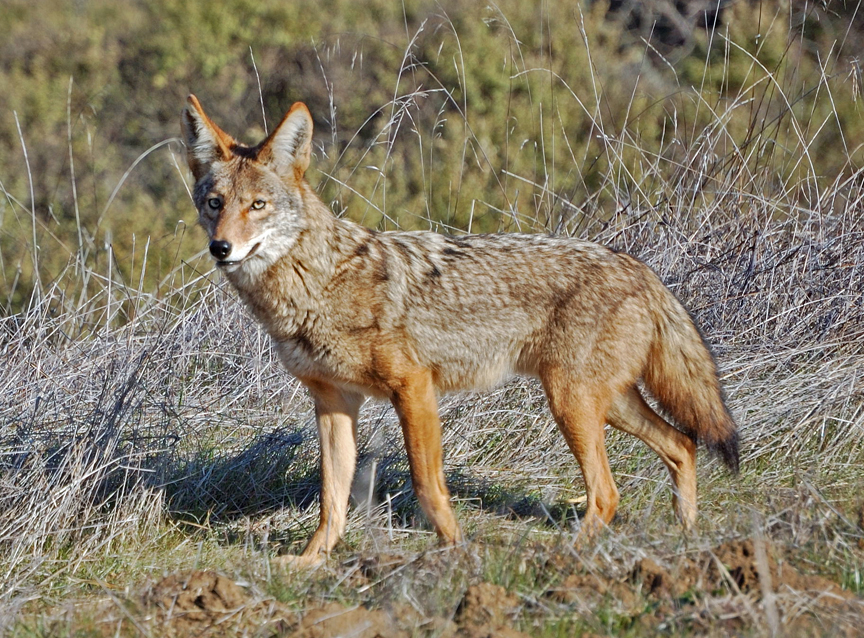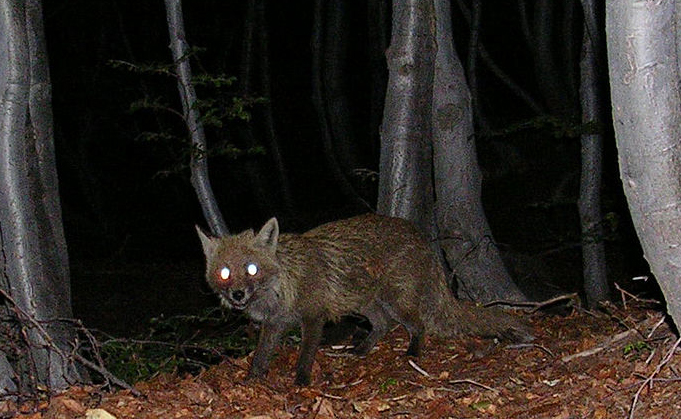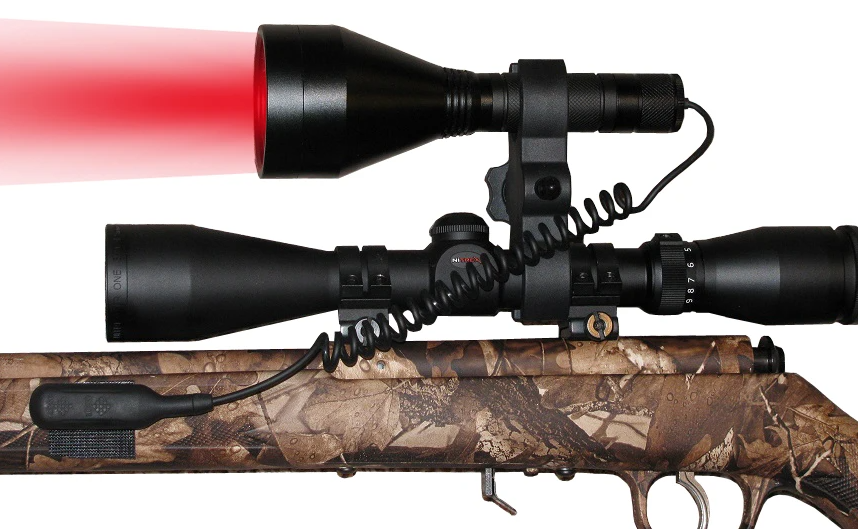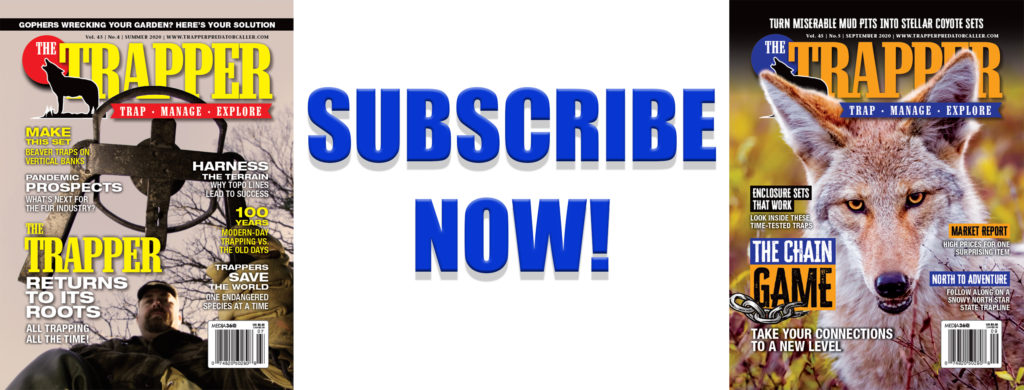By Joe Zaffuto
Hunting Eastern predators can be quite challenging since they are heavily pressured and mostly nocturnal. One tactic that hunters can take advantage of, where legal, is to target them at night. Utilizing bright lights can increase any predator hunter’s success rates, if performed correctly.
Some coyote and fox hunters just use their bright red firearms lights to scan for their target’s eyes while hunting at night. However, a light that is made specifically for scanning would be a much better choice, as all scanning lights are not created equal. It is a common misconception that brighter is always better, but that is simply not the case when using scanning lights. Some lights that are sold as scanning lights use high-output LED bulbs with a smooth reflector housing and/or a magnifying spherical glass lens to concentrate the focus of the beam. While this might show predator eyes way over in the next county, it may also have the undesirable result of “burning” the eyes and spooking the predators away.
The objective of a scanning light is to continuously scan the area while you are calling. The most common method of calling is imitating the sound of an injured rabbit while scanning and simultaneously looking for the reflection of approaching eyes. A low-intensity diffused beam will accomplish this at surprisingly long distances. I prefer using a headlamp for scanning instead of a handheld scan light because it keeps my hands free for keeping my firearm at the ready.
For example, Night Eyes Headlamps are designed specifically to pick up a predator’s eyes at well more than 300 yards away when set at only 40% brightness. The beam has also been designed to minimize the odds of spooking any predators. Its orange-peel-style reflector housing fragments and diffuses the light beam, and the fully adjustable brightness control lets the hunter dial up as little or as much of this diffuse light as desired.
Keeping this minimal amount of diffused light shining on the coyote conditions it to the light as the canine continues to approach. The coyote won’t be alarmed by the light beam, and then when the coyote is within shooting range, the hunter can switch on a brighter firearm-mounted light for positive identification and the shot.
A Night Eyes GL-350 gun-mounted light will positively identify any predator out to distances of 350 yards or more. Since the coyote has been conditioned with the less-intrusive scanning light, the brighter shooting light does not immediately trigger the animal’s photo-phobia (aversion to light), thus keeping it in range longer.
I am often asked if it is better to turn off the scanning light once the gun light is on the target predator. It really comes down to personal preference, but because I am using a headlamp rather than a hand-held light, I can easily reach up and turn the headlamp off after the gun light has been turned on. It’s important to make sure that the gun light has been turned on prior to turning the headlamp off. You never want to leave the coyote in total darkness once it has been spotted. The light beam acts as concealment for the hunter. Night Eyes now offers a wireless remote-control headlamp option for hunters who do not want to take their hand off of the rifle to reach up and turn off their headlamp.
The end goal is not just seeing the coyote’s eyes, but to get them in close for the best shot opportunity possible. Overpowering their eyes with too much scanning light is not the way to achieve this. I guess you could compare scanning with a shooting light to hunting squirrels with a deer rifle. Sure, it might work, but there are much better options. Save the brighter lights for positive target identification and the kill shot.
No lighting system, no matter how well designed, will make you a better hunter. You still need to be mindful of smart predator hunting tactics and to use good light discipline while calling. Lights are tools like any other tool — and when used correctly you will be more successful on those nighttime hunts.
How to Use Scents to Drop More Coyotes





